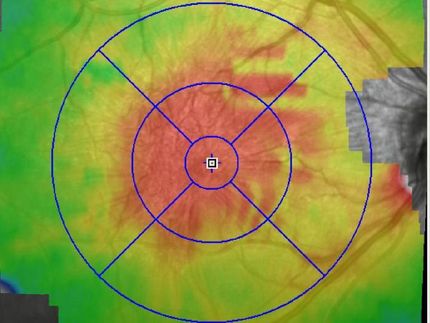'Dry eye' linked to chronic pain syndromes
Physician-researchers with Bascom Palmer Eye Institute, part of UHealth--the University of Miami Health System, have found a link between "dry eye" and chronic pain syndromes -- a finding that suggests that a new paradigm is needed for diagnosis and treatment to improve patient outcomes.
"Our study indicates that some patients with dry eye have corneal somatosensory pathway dysfunction and would be better described as having neuropathic ocular pain," said Anat Galor, M.D., M.S.P.H., a cornea and uveitis specialist and associate professor of clinical ophthalmology at Bascom Palmer Eye Institute at the University of Miami Miller School of Medicine.
Roy C. Levitt, M.D., a neuroanesthesiologist, pain specialist, and geneticist also at the Miller School, and corresponding author, noted, "A multidisciplinary approach used for chronic pain treatment may also benefit these dry eye patients."
Galor and Levitt are part of a team of Bascom Palmer Eye Institute and UHealth physicians who treat dry eye.
Their research team evaluated 154 dry eye patients from the Miami Veterans Affairs Hospital. "Dry eye patients in our study reported higher levels of ocular and non-ocular pain associated with multiple chronic pain syndromes, and had lower scores on depression and quality-of-life indices consistent with a central sensitivity disorder," said Levitt, a professor and Vice Chair of Translational Research and Academic Affairs in the Department of Anesthesiology, Perioperative Medicine and Pain Management. "We also suspect that neuropathic ocular pain may share causal genetic factors with other overlapping chronic pain conditions."
The American Eye Institute estimates that dry eye affects about 3 million Americans every year. When the eyes do not produce an adequate supply of tears or the tears evaporate too quickly from the surface of the cornea, patients develop an "itchy" or painful sensation. Left untreated, dry eye can lead to inflammation, ulcers or scars on the cornea.
"Patients' eyes may become hyper-sensitive to stimuli, such as wind or light, or have spontaneous pain such as a feeling of burning, which is typically associated with nerve injury," said Levitt.
"Traditionally, eye specialists have treated dry eye with artificial tears or topical medications for the surface of the cornea," said Galor. "However, even if these treatments improve some dry eye symptoms, many patients continue to report underlying ocular and non-ocular pain."
Reflecting on the implications of the study, Galor said, "Our highest priority is educating physicians that dry eye represents an overlapping chronic pain condition. Consequently, a multidisciplinary approach should be considered in the diagnosis and pain management of dry eye patients."
Original publication
Anat Galor, Derek Covington, Alexandra E. Levitt, Katherine T. McManus, Benjamin Seiden, Elizabeth R. Felix, Jerry Kalangara, William Feuer, Dennis J. Patin, Eden R. Martin, Konstantinos D. Sarantopoulos, Roy C. Levitt; "Neuropathic Ocular Pain due to Dry Eye Is Associated With Multiple Comorbid Chronic Pain Syndromes"; Journal of Pain; 2015
Most read news
Original publication
Anat Galor, Derek Covington, Alexandra E. Levitt, Katherine T. McManus, Benjamin Seiden, Elizabeth R. Felix, Jerry Kalangara, William Feuer, Dennis J. Patin, Eden R. Martin, Konstantinos D. Sarantopoulos, Roy C. Levitt; "Neuropathic Ocular Pain due to Dry Eye Is Associated With Multiple Comorbid Chronic Pain Syndromes"; Journal of Pain; 2015
Organizations
Other news from the department science

Get the life science industry in your inbox
By submitting this form you agree that LUMITOS AG will send you the newsletter(s) selected above by email. Your data will not be passed on to third parties. Your data will be stored and processed in accordance with our data protection regulations. LUMITOS may contact you by email for the purpose of advertising or market and opinion surveys. You can revoke your consent at any time without giving reasons to LUMITOS AG, Ernst-Augustin-Str. 2, 12489 Berlin, Germany or by e-mail at revoke@lumitos.com with effect for the future. In addition, each email contains a link to unsubscribe from the corresponding newsletter.





















































